MODEL COURSE
- Mizusawa Esashi Station
- Historical Park Esashi Fujiwara no Sato
- Chusonji Temple [World Heritage Site]
- Hiraizumi Cultural Heritage Center
- Motsuji Temple [World Heritage Site]
- Ichinoseki city (accommodation)
- Genbikei
- Geibikei Gorge
- Ofunato city (accommodation)
- Tsubakikan and Go stones around the world
- goishi coast
- Kesen Carpenter and Plastering Tradition Museum
- Takada Matsubara and the miraculous single pine tree
- Rikuzentakata Station
Mizusawa Esashi Station
 20 min
20 min
Historical Park Esashi Fujiwara no Sato

奥州藤原氏の軌跡を辿り、みちのくの歴史と文化が体験できる、約20ヘクタールの広大な歴史テーマパーク。
厳密な時代考証に基づき、東北古代の城柵から藤原清衡の居館・豊田館をはじめ奥州藤原氏の政庁、秀衡の居館・伽羅御所、黄金文化の象徴である金色堂などを本格再現しました。大河ドラマをはじめ、数多くのテレビ番組や映画などのロケ地としても知られています。
また、郷土芸能「江刺鹿踊」の定期公演(4月下旬~11月中旬 毎週日曜日)も行っております。(1日2回公演 11:00、14:00)
 42 minutes
42 minutes
Chusonji Temple [World Heritage Site]
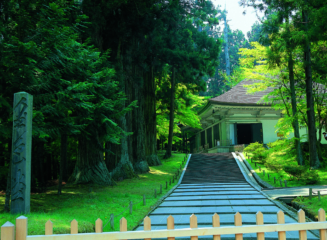
This is the main temple of the Tendai sect of Buddhism in the Tohoku region. The name of the mountain is Kanzan, and Jikaku Daishi is the founder of the temple.
In the early 12th century, Kiyohira, the first generation of the Oshu Fujiwara clan, built a number of pagodas, including a pagoda and a two-story hall.
The purpose was to comfort the souls of those who died in the long wars of the Former Nine Years' War and the Later Three Years' War, and to build a Buddhist land.
Although the pagodas were sadly destroyed by fire in the 14th century, the temple is still a treasure house of Heian art, containing over 3000 national treasures and important cultural properties, including Konjikido.
 4 minutes
4 minutes
Hiraizumi Cultural Heritage Center
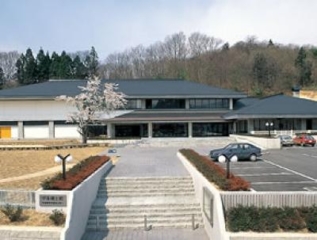
On April 14, 2009, Hiraizumi Town integrated the Hiraizumi Local Museum and the Town Cultural Heritage Center to open the Hiraizumi Cultural Heritage Center. As a guidance facility that provides an easy-to-understand introduction to Hiraizumi's cultural heritage, and as a visitor center for sightseeing in the town, it introduces a wide range of Hiraizumi's history and culture.
Detailed Destination Information 4 minutes
4 minutes
Motsuji Temple [World Heritage Site]
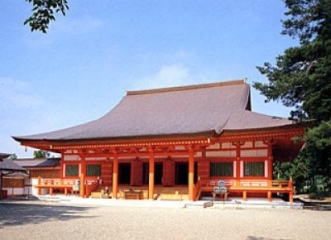
Motsu-ji Temple, a separate head temple of the Tendai sect, is called Iiozan (Mt. Iio) and was founded by the great priest Jikaku in 850.
In the late Heian period (794-1185), Motohira (the second Fujiwara lord of Oshu) and Hidehira (the third Fujiwara lord of Oshu) built a magnificent temple complex, including Kondo Enryu-ji and Kasho-ji.
Although the temple buildings of those days were regrettably destroyed by fire due to repeated disasters, the " Pure Land Garden" centering on Oizumigaike Pond and the remains of Heian-period temple buildings have been preserved in almost perfect condition and have been designated as both a Special Historic Site and a Special Place of Scenic Beauty by the national government.
 24 minutes
24 minutes
Ichinoseki city (accommodation)
 15 minutes
15 minutes
Genbikei
Kurikoma, is a scenic beauty and a natural monument. Iwai River, which flows from its source at Mt. Kurikoma, erodes huge rocks, creating a 2-km-long gorge with a variety of expressions such as a hole, a waterfall, and an abyss. Walking along the promenade, visitors can see from the suspension bridge the contrasting views of the wild upstream flow and the gentle downstream abyss. In spring, visitors can enjoy the beauty of the valley with cherry blossoms in full bloom and melting snow, in summer they can listen to the cool murmur of the mountain stream, in autumn they can see the changing colors of the mountains, and in winter the scenery is reminiscent of an ink painting.
The famous "kakko dango" are sold at a store on the other side of the river, where you place your order and payment in a basket lowered by a rope stretched over the river, and then ring a wooden mallet.
 44 minutes
44 minutes
Geibikei Gorge

One of Japan's top 100 views.
It is an approximately 2 km long gorge created by the Satetsu River eroding limestone, with approximately 100 m cliffs rising on both banks.
The current is calm, and you can hear the boatman's song ``Geibi Oiwake'' as you go down the boat.
 78 minutes
78 minutes
Ofunato city (accommodation)
 26 minutes
26 minutes
Tsubakikan and Go stones around the world
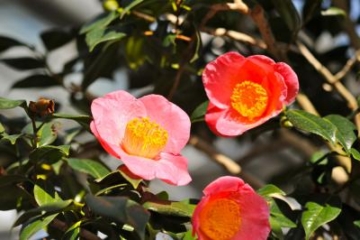
Ofunato is known as the "village of camellias" due to its warm climate, and the native camellias are blooming with red flowers everywhere.
The camellia has been designated as the flower of Ofunato City and has become a symbol of the city.
The World Camellia Museum/Goishi exhibits 700 camellias of approximately 600 varieties from 13 countries around the world.
In addition to displaying seasonal flowers produced in the area, camellia seedlings, camellia goods, camellia oil, and potted plants are also on sale.
 19 minutes
19 minutes
goishi coast
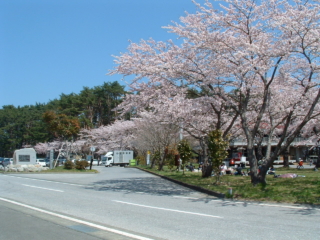
The approximately 6 km long coastline at the tip of the Suesaki Peninsula that juts out to the south of Ofunato Bay is the Goishi Coast, which has been designated as a national scenic spot and natural monument. In addition, Goishi Beach has been designated as one of the top 100 beaches in Japan with white sand and green pine trees. Furthermore, the sound emitted from the Thunder Rocks within it has been designated as one of Japan's ``100 Best Soundscapes of Japan to Preserve.'' The climate is warm, and the pine forest is filled with flowers such as hyacinth japonica, Japanese lily, and cypress lily. There are also facilities in the surrounding area, such as the City Museum, the World Camellia Museum, Go Stone, and a campground.
Detailed Destination Information 19 minutes
19 minutes
Kesen Carpenter and Plastering Tradition Museum
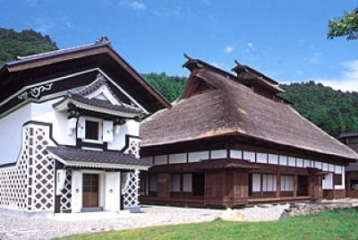
The Kesen Carpenter and Plasterer Tradition Museum was built in the citizen's forest to pass on and preserve the craftsmanship of Kesen carpenters and plasterers. Kesen cedar is used abundantly here as well, and there are three buildings with a variety of styles, such as thatched mushrooms and warehouse structures. The tea you drink in the hearth of the main building also has a special taste.
Detailed Destination Information 4 minutes
4 minutes
Takada Matsubara and the miraculous single pine tree
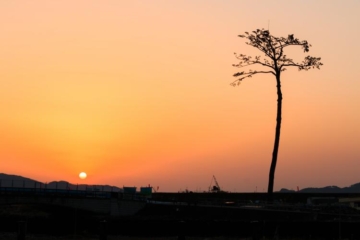
It is a bow-shaped sandy beach that stretches from the mouth of the Kesen River to Hirota Bay, and was once one of the most representative beaches on the Rikuchu coast, but it was severely damaged by the Great East Japan Earthquake. A forest of tens of thousands of red pine and black pine trees over 300 years old had been planted over a 2km stretch, but they were washed away without a trace. The single pine tree that miraculously survived has become a symbol of reconstruction, and has been preserved as a monument for future generations.
Detailed Destination Information 14 minutes
14 minutes
Rikuzentakata Station




